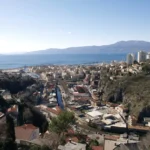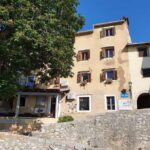Resting like a pearl in the arms of a hill at the heart of the bay that shares its name, Bakar is a place both scenic and timeless.
Though at a glance seems to look tiny, one of the elder northern Adriatic towns has plenty of that to offer, especially to wanderers like me seeking the traces of the past. A place built amphitheatrically on a hill has a picture-perfect historic core. The latter has been proclaimed as a cultural monument since 1968. It’s with reason since the scenic place is considered one of the oldest towns in Northern Adriatic.
In addition to having the nucleus historic core and a tiny port, the place where the Mediterranean Sea deepened into the European mainland is right to expire “Bora Wind”. The best time to do that is during the winter while there is only some breeze in the summer.
5 best things to do in Bakar
At this moment below, we present the top 5 things one should make while visiting Bakar.
Stroll old city core streets and mention of the tiny circle house entrances
One of the first things to do in Bakar wanders the cobbled streets of the Old Town. There are located all of my favourite attractions. Beset by the remains of the town gates and remnants of the walls used to protect this historic city, you’ll get to enjoy beautiful architecture dating as far back as the early Middle Ages.
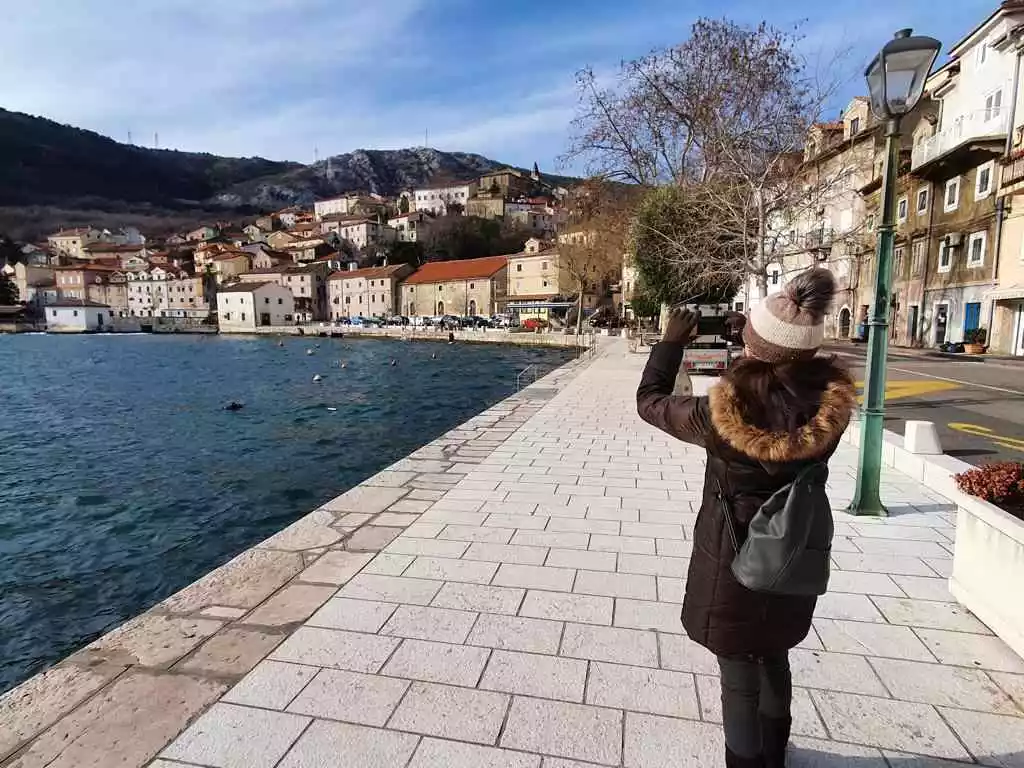
There’s a fantastic view from the upper town streets. Simultaneously, the small square is a regular tourist hotspot, making it an ideal place to enjoy your holiday. Keep an eye out for Roman House, the Citadel, Turkish house and bell tower, making the original town postcard. We’ve walked all over the Old Town of Bakar and love its artistic vibe. While walking the Upper Old Town one could mention many of the tiny circular entrances to the areas served as cellars basements and places for a living. This circular door seems to be very picturesque, making it a real place of art.
Admire St. Andrew the Apostle church
This largest church in Bakar was proclaimed as a parish on 28th August 1853. It is also the third church in Croatia by its size, after those Cathedrals in Zagreb and Đakovo. The building dating back to the 12th century is assumed to be the oldest on this site. It was severely damaged by the earthquake in 1323. The church dedicated to Holy Trinity changed the protector while after restoration, the city’s patron became St Andrew.
Underneath the parish, there is a crypt with 85 graves, divided into two parts. The vault is not thoroughly researched, which would surely bring more information about the church’s time. Still, it is supposed it indeed belonged to an older building. The emblems are from the 18th and the 19th century, and some graves have no inscription.
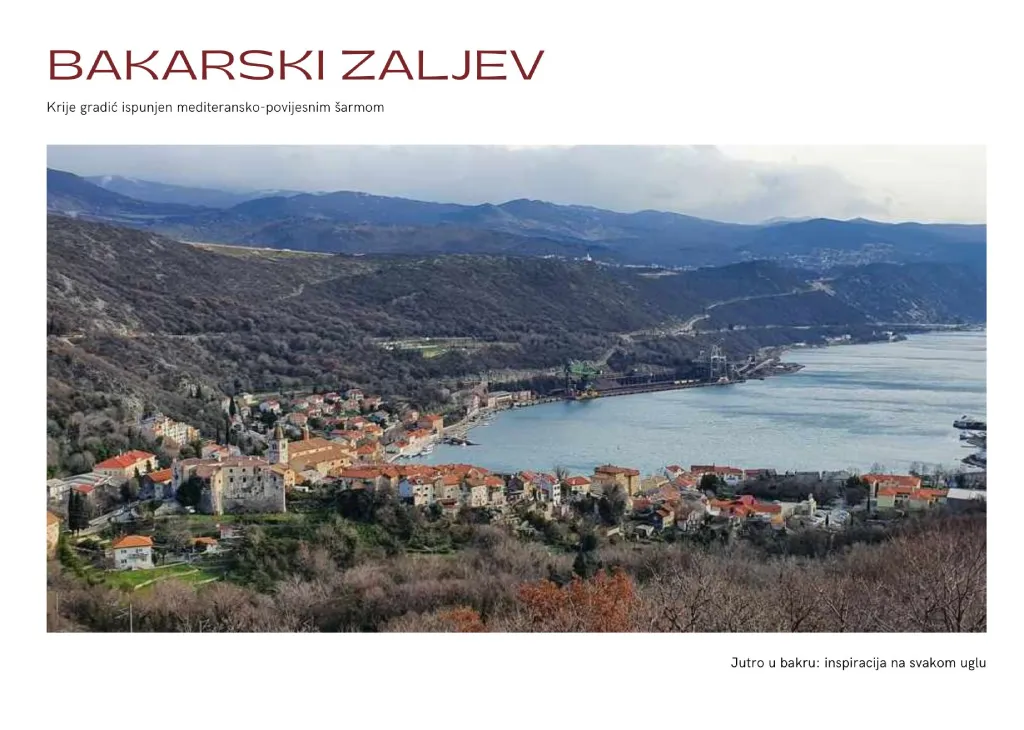
There is a bell tower dating back to 1710, next to the church. The fact to mention is that the bell tower remained intact and was not damaged by an earthquake. Though the bell tower seems to be very vibrant when seeing it from close, this city symbol is the most photogenic when capturing it in apart all of the city from above.
Turkish House
Within the city’s medieval walls next to the largest square in the old town is the Turkish House. One of the best known and indeed the most attractive houses for visitors coming to this town is the unknown builder. Nor even is unknown when it was built but there are two legends about Its origin (a house without ‘corners). The house got Its distinctive oriental appearance in its reconstruction and expansion in the late 17th century.
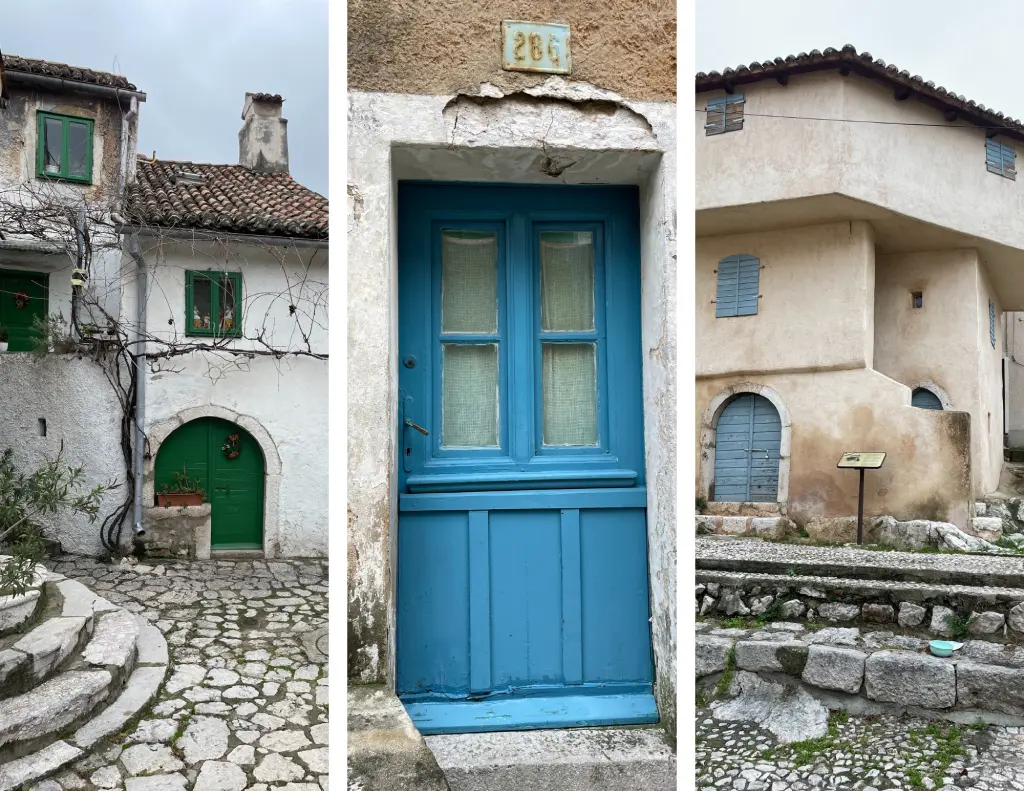
The uniqueness and beauty of the Turkish house draw the attention of many photographers and painters. It is a common theme in paintings, and therefore some call it a home of painters. A place is peculiar for its shape, which looks like a watchtower.
Marvel The Zrinski – Frankopan Citadel in Bakar
Standing at the top of the hill is the citadel (Bakar’s Castle), one of the most historic town buildings. This imposing medieval building rising about fifty metres above the bay by archaeological research indicates its presence since the Bronze Age and Iron Age when the tribe of Liburnas lived in this area. It is not known precisely where the castle was precisely built. Indeed, the court steadily gained its present form in the early 16th century due to the possible Ottoman threat. the new feudal fortress was further strengthened and fortified. This is recorded in the Glagolitic Inscription from 1530 which is engraved on top of the stone gate entrance door. In the 16th and 17th centuries, the castle was owned by noble Zrinski dukes, the Frankopans’ relatives.
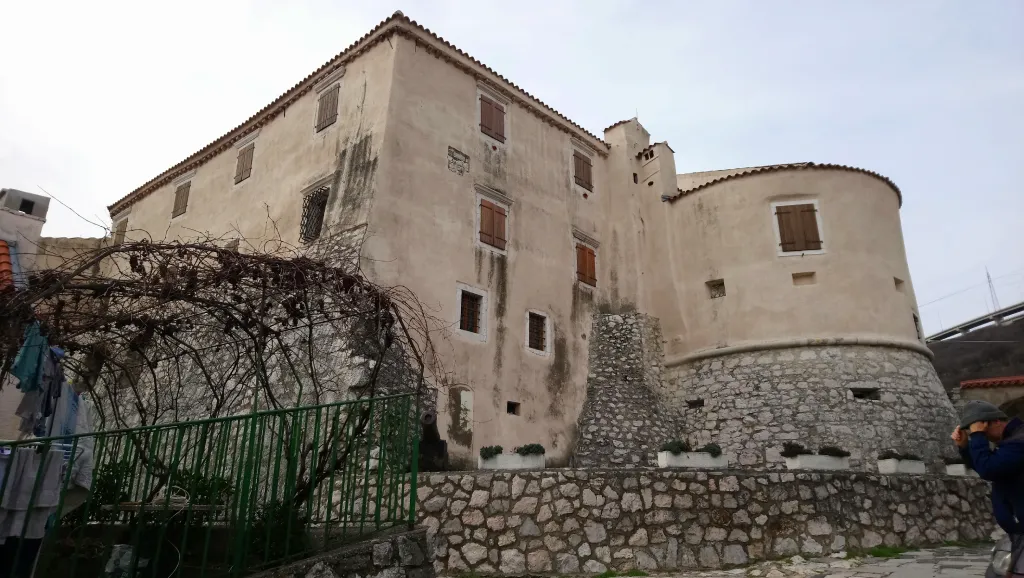
There was once a fortress protected by the walls and military facilities on the site of nowadays castle. This Is written in Vinodol Code (1288). Bakar was mentioned as a “Fortified City” in it. Although it was destroyed by an earthquake, the castle inspires. At first glance, it awakens the spirit of the past. The court reminds us of Middle Ages war conflicts, glorious times as the spirit of cultural literacy and creative creation. It has material and cultural layers. Therefore, it is a real, original and authentic witness of Bakar’s and Croatians’ past century history.
Take a look the Romans House
One of the most impressive late Baroque buildings in Bakar is next to the castle and the parish church of St Andrew. Some would say this is the most marvellous building in the upper part of the town. The Roman House reminding the similar ones along the Adriatic coast (Poreč) is characterized by a remarkable and monumental appearance in the neo-Renaissance style. The characteristics of construction show a high level of culture of its builders. There is no constructor and the first owner of this building. It is assumed it was built as a convent in the 18th century and was the family Carina’s home for many years.
Bonus thing to do in Bakar: have a look at the historical water collection points
Bakar Bay is an interesting geological, a submerged karst valley stretching parallel to the coast in a northwest-southeast direction. Bakar has always been a jewel with a water source. Unlike the many other medievals, the place is particular to its position above the hill. This made him historical substantial and significant, but also enabled the site of living for its habitants.
Jaz
This natural phenomenon pond located downtown next to the sea has become one of the most recognizable symbols of Bakar. Since the city belonged to Frankopans, Jaz is mentioned as a water collection point, coming from several rich Bakar water sources flowing underground through the surrounding hills.
The water coming from the source is cold and pure, and it does not dry even during extreme heat and drought. At the end of the 20th-century people began with trout cultivation, so that pond has its inhabitants. The pond is very picturesque and is an excellent point to capture.
Perilo
Being a part of the water source, this cultural and historical monument stands on the shore, as a silent witness keeping the stories from city history. Perilo was a site for washing clothing but also a place where the latest city news was retold.
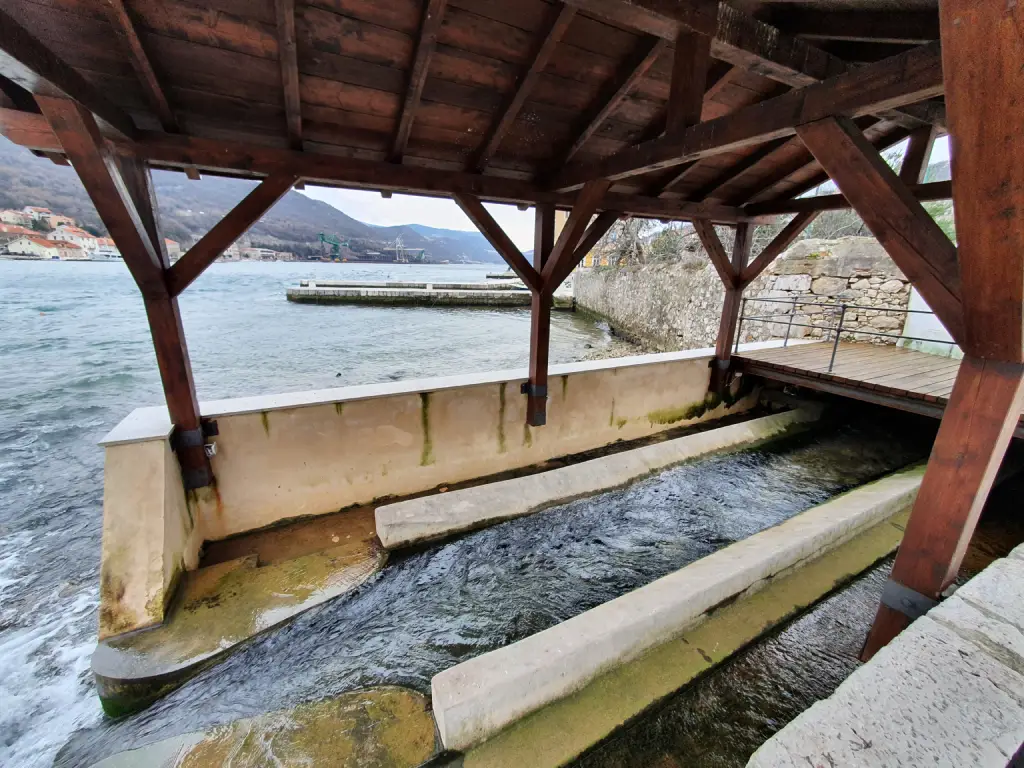
Unlike the many other medievals in surround, Bakar has the fortune to have a freshwater source, so this place was so popular that many Bakar’s families used it for laundry. Laundry was first done at home by hand washing on a wooden washboard. A domestic soap was used for washing. The laundry was placed into the bucket and carried to the town’s winding, streets to Perilo where it was rinsed. There are many old postcards of hearing witnesses where one can see the upgrade and updates of Perilo through the years. Let’s take some of the images and transform them into an art postcard.
The other things to do while in Bakar
Every place has its features. So the Bakar also does it. Hereby we mentioned specific things not to miss while in Bakar.
Stroll around the old Bakar cemetery
Don’t be alarmed at the name. This cemetery is nowhere near as creepy as it sounds. It is a relaxing and sacred place dedicated mostly to the sailors. The old cemetery located in the area just next to the Church of Mother of God of the Port used to serve as the central county cemetery. This may be seen in many gravestones built into the church’s interior walls, from which many have an artistic value. Stroll it in peace, and meet some historical Bakar family names.
The church of Holy Cross
Located among the old town’s houses and streets well-hidden from curious glances, this is a tiny building that will not leave you indifferent. After the great earthquake in 1750, the noble family Carina helped to rebuild the chapel (until then dedicated to St. Peter). The church not more significant than several houses surrounding it has been standing there since 1764. The building is peculiar due to its main door being built in the east, and the altar in the west, which is the reverse of the Catholic Church’s usual practice. The building has preserved its medieval appearance.
Entering into its simple yet solemn interior results in a touch of mysticism and spiritual intimacy. So that one can feel the breath of old times in this church, where the altar remained positioned as it once was. A priest carried out the liturgy with his back to the faithful.
The Church of Mother of God of the port
Church of Mother of God of the Port lying on the north-east side of the Bakar town, outside of the old medieval city walls next to the sea. They are below once used to be a port. The building’s name is dedicated to the sailors and all of those who were involved in navigation. This church was, therefore, a votive shrine for sailors from these regions.
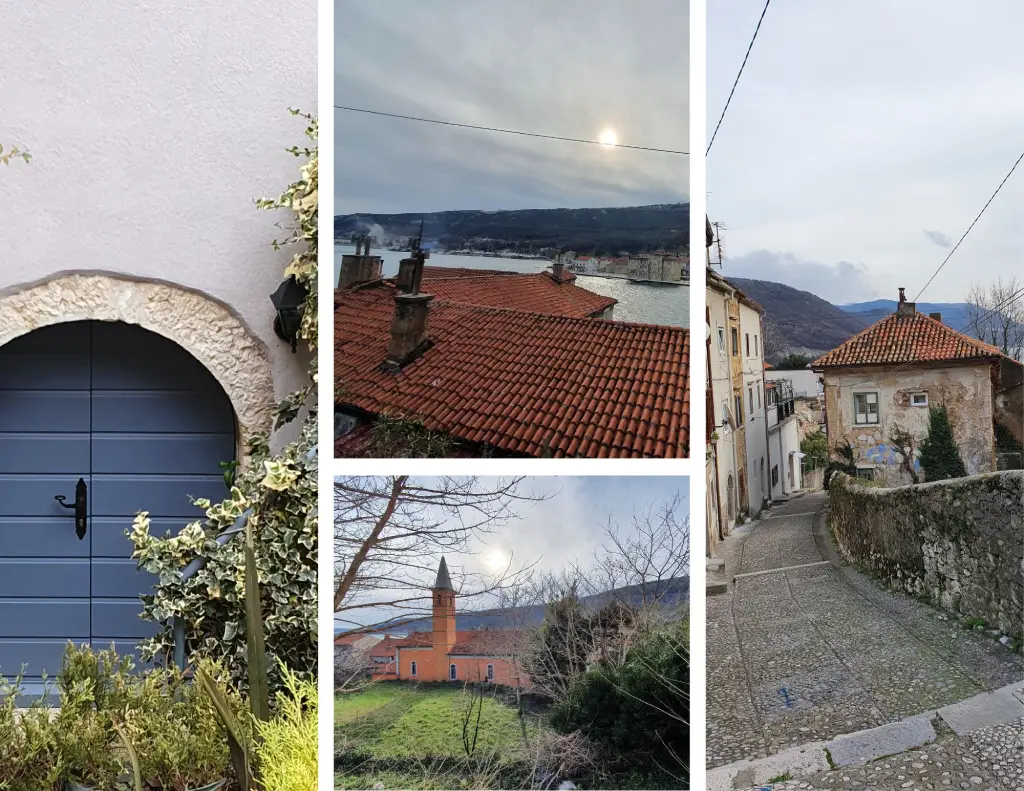
The first and the oldest inscription about the church derives from one Glagolitic document dating from 1445. It suggests that the church had been founded earlier in the past. The building was restored, upgraded, and expanded several times. In 1641 the famous Croatian noblemen, the Zrinski family, who governed the town of Bakar during that time, fixed the church.
Saint Margaret’s Church
Located on the south side of the town, is the St. Margaret’s Church, the patroness of Bakar. The Church of St. Margaret was built in 1658 with the donation of governor PetarZrinski. However, about two hundred years earlier in 1450, Martin Frankopan ordered to build a chapel in St. Margaret’s honour, and the governor PetarZrinski transformed the chapel into today’s church.
The most valuable piece of art in the building is a canvas presenting St. Margaret, an artwork of the Slovenian painter Valentin Metzinger.
Sea promenade walk and a sea tunnel
It’s virtually impossible to get lost in Bakar, which is ideal for those who enjoy wandering around as they please, seeing what they can find along the way. But one of the things must do is a seaside walk. After arriving at Bakar, a beautiful stone pier makes the long promenade ideal for a walk, offering to rest from the daily binds.
The thing that might be particularly mentioned in the south part of the town is a tunnel under the sea, connecting both parts of the bay. The tunnel made when Bakar was an industrial port was served due to the coke (coal, fuel) production. Unfortunately, today the tunnel is closed but who knows maybe sometime it becomes a tourist sight.
Getting to Bakar
📍 Favorable location: close to the Istrian Peninsula, Kvarner islands, Gorski Kotar, and only 13 km from Rijeka. Easy access via highways from Zagreb and Dalmatia.
🚗 By Car. ~15 minutes from Rijeka.
🚌 By Bus. Regular public lines connect Rijeka and Bakar.
General Information – Bakar
🚶 Getting around. Bakar is a tiny heritage town best explored on foot.
ℹ️ Tourist Information. Tourist office is located at the bottom of the town, next to the sea.
📮 Postal & Telephone Services. Telephone cards for payphones are available at newsstands and post offices.
🚖 Taxi. No official taxi service in Bakar, but you can arrange one from Rijeka.
🚶 By foot. Exploring the heritage core takes about 1–2 hours.
🅿️ Parking. Most parking spaces are next to the sea, along the main road.
⛰️ Get active in Bakar:
- Hiking trails around Bakar.
- Nearby mountains perfect for outdoor adventures.
- Adriatic coast & bay great for kayaking or sailing.
- Risnjak National Park (with its peak).

